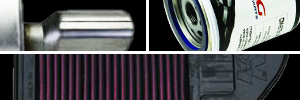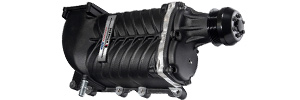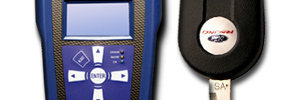ProCal - Performance Calibrations

Unlock your vehicle's potential
ProCal is included in select Ford Performance Cold Air Kits, Power Upgrade Packages, and Supercharger Kits. Ford Performance Calibrations are engineered to generate optimal horsepower and torque, while delivering:
Engine Durability | Exceptional Drivability | 50-State Legal
Enhanced features: now accepts input for axle rotation and tire size, easy-to-read display, step-by-step calibration loading instructions, and OBD II diagnostic code display capability. Trust Ford Performance's ProCal to unlock your vehicle's potential without putting your powertrain at risk.
Ford Performance engineers are often asked, "Why do certain companies claim bigger power increases with their upgrade kits than you do with your kits?"
It's a simple question, but the answer is fairly complex. As a starting point, though, calibrations from Ford Performance for items such as its cold-air and supercharger kits are done by Ford engineers who, in many cases, worked on the actual production vehicles.
"Ford Performance engineers have resources no one else has," says Dennis Gomes, who is Mod Shop director/calibration, for Tasca Automotive Group, Inc. Gomes has seen a lot of performance installations – Ford Performance and others – and has good reasons why Ford Performance is their first choice.
"Ford Performance's calibrations provide the most power that can be safely delivered by the powertrain" he says, "all while maintaining driveability and emissions compliance."
No one is more familiar with Ford engines and control systems than Ford engineers, and they take great care to develop ideal calibrations, starting with the vital dynamometer testing. For aftermarket upgrade kits, the same is not necessarily so.
"Ford Performance engineers have resources no one else has"
First, depending on how the dyno testing was done, the real power increase might not be as much as they claim. And second, without proper calibration, any power increase can be harmful to powertrain durability and drivability.
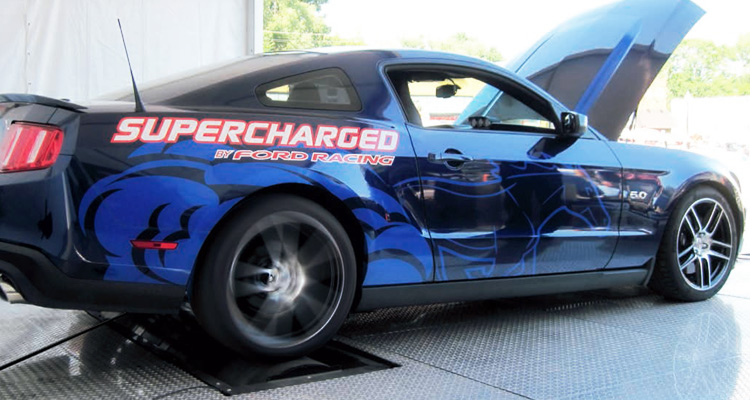
Chassis dyno testing
There are two types of chassis dynos in widespread use today: inertia, and eddy current. Which measure power in totally different ways. The only common denominator is that the drive wheels of the vehicle spin up a device that measures power output at the wheels.
As a starting point, needless to say, power measurements before and after an upgrade installation have to be done on the same type of dyno (preferably the same dyno) if you want to get meaningful results.
Beyond that, there are standard correction factors that have to be applied, to compensate for varying conditions like humidity, barometric pressure, and air temperature. You have to be sure the same standards were used for the before and after dyno tests. It's also critical to keep test conditions for each run as similar as possible.
At a minimum, this data must be collected for each run:
- Ambient air temperature
- Barometric pressure
- Inlet air temperature (on a forced-induction car, this is usually downstream of the power adder)
- Air / fuel (A/F) ratio (preferably upstream of any catalyst) A/F ratio is the single most important parameter to measure accurately, and Ford Performance also uses these other data inputs to get ideal dyno testing and calibration:
- Air / fuel ratio and spark advance commanded by the PCM
- Fuel injector pulse width
- Fuel pump duty cycle (in the case of ERFS)
- MAF sensor voltage
- Fuel pressure
- Engine oil temperature
- Differential oil temperature

Powertrain Control Module calibration
There's also the matter of the engine's internal conditions, which are monitored and adjusted-for by the powertrain control module (and the way it's calibrated). Ford Performance calibrations, like Ford production calibrations, are developed with certain protections against damage, both short-term and long-term, caused by particular internal conditions – mainly heat.
One example is protection against overly hot catalyst temperatures, which can cause permanent damage. Without going into how it's done, a production PCM will continually calculate the hottest temperature in a catalyst, and if it exceeds a predetermined limit, the PCM will richen the A/F ratio to lower the exhaust gas temperature until the catalyst has cooled sufficiently. Of course a richer A/F ratio will also reduce power output.
So what? Well, suppose a car – a supercharged production vehicle with production calibration – is driven to a dyno facility and a run is performed immediately, resulting in a reading of 420 hp. Then a part is swapped out for a "high-performance" version and the car run again; the reading is 430 hp. The high-performance part is worth 10 hp, right? Wrong. In this hypothetical example, the dyno operator was not monitoring A/F ratio, so didn't know that in the first run, with the engine fully up to temperature, the catalyst protection function kicked in, richened the A/F ratio, and reduced power output. In the second run, the engine had cooled enough that the catalyst protection wasn't needed and the A/F ratio remained optimal. So the results were misleading; it wasn't an apples-to-apples comparison.
That example may be trivial, but it shows how vital the essential data input is to getting correct results. In this case, if the A/F ratio had been monitored, the discrepancy would have been immediately apparent.
Similarly misleading results can be caused by a failure to keep inlet air temperature constant between runs. As inlet air temperature increases, the PCM will retard spark timing to prevent detonation, lowering power output.
Some aftermarket cold-air kit manufacturers claim enormous power gains using nothing but their kit and a production calibration. Most of these claims are not supported with A/F, inlet temperature, or spark advance traces during the dyno pulls shown in their advertising.
In some cases, the apparent increase in power is because the mass air flow sensor transfer function in the PCM is left stock. With the new the cold-air kit flowing more air, the stock PCM will not "know" about the extra air that's entering the engine, causing an A/F ratio that is leaner than it should be for durability. This can produce more power, but it also can be damaging to catalysts, exhaust valves, piston rings, and other engine components. The commanded spark advance can also be incorrect, and result in detonation or pre-ignition with potentially catastrophic results.
The bottom line is, a healthy dose of caution and skepticism is a good thing when approaching high-performance power upgrades.
Some aftermarket tuners do a few "tricks" that Ford Performance does not recommend, such as:
- Turning off the catalyst, oxygen sensor and exhaust valve temperature protection logic. This can result in more power under certain conditions, but the downside is drastically decreased durability of these expensive components.
- Advancing spark timing to potentially unsafe levels that can cause spark knock or pre-ignition. So the answer to the opening question is, some power increase claims are based on poor and misleading dynamometer test practices. Others are genuine but at the expense of engine, catalyst, or drivetrain durability. Even driver safety is sometimes overlooked for horsepower.
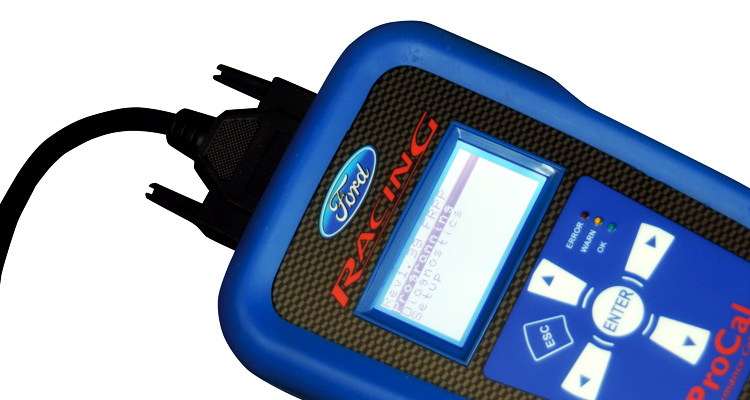
Ford Performance calibrations
Ford Performance tests its calibrations extensively, in a wide range of conditions. The engineers take extreme care to provide as much power and torque as can be safely delivered, and also to deliver high durability and exceptional drivability. In the area of automatic transmission calibration, they generally make extensive changes to improve shift quality and give the transmission a more performance-oriented feel, without compromising durability.
Most other companies do not have the time or resources to test to the extent Ford Performance does. Some don't realize they need to do it at all!
"We have a lot of customers wanting a 600 hp blower kit," says Dennis Gomes, "but when they learn that Ford Performance's 400 hp kit can be installed and they can keep the factory warranty – it's easy. Also, you can put Ford Performance calibrations on a Mustang and it will pass emissions, no problem."
In fact, all Ford Performance kits are 50 state emissions legal and many are offered with a warranty. Customers can be sure of a quality product that will continue to deliver improved performance over the long term.

